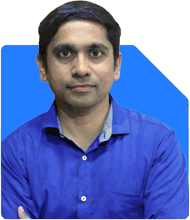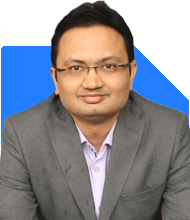best investment for Senior citizen for high return and safety
Ans: Importance of Balancing Safety and Returns
As a senior citizen, safety and regular income are crucial when choosing investments.
High returns are attractive, but the safety of capital is equally important. Balancing both can be challenging but achievable.
Investments should also provide liquidity. This is necessary to meet unexpected expenses.
It’s vital to select instruments that offer stability, predictable returns, and minimal risk.
Fixed Deposits (FDs) for Stability
Fixed Deposits are one of the safest investment options. Banks and post offices offer these with guaranteed returns.
They provide a fixed interest rate, offering predictable income. This can be especially reassuring for senior citizens.
FDs come with flexible tenures, from a few months to several years. This allows you to align them with your financial needs.
Senior citizen FDs often offer a higher interest rate. This additional return can help in boosting your income.
However, while safe, the returns are moderate. Consider allocating a portion of your funds here for security.
Senior Citizen Savings Scheme (SCSS) for Regular Income
The Senior Citizen Savings Scheme (SCSS) is another safe and government-backed option. It offers a high interest rate, specifically designed for senior citizens.
The scheme has a tenure of five years, with the option to extend it by three years.
Interest is paid quarterly, providing a regular income stream. This can help meet your day-to-day expenses.
The investment limit is Rs. 15 lakh per individual. This limit ensures a significant portion of your savings can earn a stable return.
While SCSS offers safety and regular income, the returns are fixed. Therefore, it's wise to balance it with investments that have growth potential.
Pradhan Mantri Vaya Vandana Yojana (PMVVY) for Guaranteed Pension
The Pradhan Mantri Vaya Vandana Yojana (PMVVY) is a pension scheme for senior citizens, offered by LIC.
This scheme guarantees a fixed return, with options for monthly, quarterly, or annual payouts.
The investment limit is Rs. 15 lakh per senior citizen, similar to SCSS.
The scheme has a tenure of 10 years, providing long-term income stability.
PMVVY is ideal for those looking for guaranteed income with minimal risk. However, the returns are capped, so consider diversifying your investments.
Monthly Income Schemes (MIS) for Steady Income
Monthly Income Schemes (MIS) are another reliable option. These schemes are available through post offices and certain banks.
They offer regular monthly income, ideal for covering recurring expenses.
MIS is government-backed, ensuring the safety of your investment.
The tenure is five years, with the possibility to reinvest upon maturity. This ensures continued income over time.
While safe, the interest rates may not keep pace with inflation. This makes it essential to complement MIS with growth-oriented investments.
Debt Mutual Funds for Conservative Growth
Debt Mutual Funds invest in fixed-income instruments like bonds and government securities. They are less volatile than equity funds.
These funds can offer better returns than traditional savings accounts or FDs. They also provide liquidity, allowing easy access to your money when needed.
Debt funds are ideal for conservative investors seeking steady growth without taking on much risk.
The taxation on debt funds can be more favourable than on fixed deposits. This can lead to better post-tax returns, especially if held for over three years.
However, they carry some interest rate and credit risk. It's important to choose funds with a strong track record and low credit risk.
Balanced Advantage Funds for Limited Equity Exposure
Balanced Advantage Funds are hybrid funds. They invest in both equity and debt, adjusting their allocation based on market conditions.
These funds offer a balance of safety and growth, suitable for senior citizens willing to take a bit more risk for higher returns.
The equity portion can provide growth, while the debt portion offers stability. This makes them a good middle-ground investment.
Balanced Advantage Funds can help combat inflation and preserve purchasing power over time.
It’s essential to monitor these funds regularly. Though they adjust allocation automatically, they are still subject to market risks.
Corporate Fixed Deposits for Higher Returns
Corporate Fixed Deposits offer higher interest rates compared to bank FDs. However, they come with higher risk.
It's crucial to choose corporate FDs from well-rated companies. This reduces the risk of default and ensures your capital is safer.
The interest income is taxable, just like bank FDs. Consider your tax bracket when choosing this option.
These are suitable for those seeking higher returns while accepting moderate risk.
Diversifying across different companies can help manage the risk associated with corporate FDs.
Government Bonds for Long-Term Security
Government Bonds are a secure investment, backed by the government. They offer a fixed interest rate and have long-term tenures.
They provide higher returns than savings accounts, with minimal risk of default.
Bonds with tax-free interest are available, offering attractive post-tax returns.
Government bonds are ideal for senior citizens who prefer long-term, risk-free investments.
However, they may lack liquidity, as they often have long lock-in periods. Consider this when planning your investment strategy.
National Savings Certificate (NSC) for Assured Returns
The National Savings Certificate (NSC) is a government-backed savings bond. It offers a fixed return and comes with a five-year tenure.
NSC is a safe investment option, suitable for conservative investors.
The interest earned is compounded annually but paid out at maturity. This helps in building wealth over time.
NSC investments are eligible for tax deductions under Section 80C. This can be a benefit if you’re looking for tax-saving options.
However, like other fixed-return instruments, the returns may not keep pace with inflation. Balance this with other investments to ensure adequate growth.
Avoiding Risky and Complex Investments
It’s advisable to avoid high-risk investments like stocks, equity-heavy mutual funds, or complex financial products.
Products like ULIPs or annuities often come with high fees and lower returns. They may not be suitable for senior citizens seeking safety and liquidity.
Direct investments in stocks or equity mutual funds can be volatile. These are more suitable for younger investors with a long time horizon.
Instead, focus on investments that offer stability, regular income, and capital preservation.
Benefits of Regular Funds Through MFDs with CFP Credential
Investing in regular funds through a Certified Financial Planner (CFP) ensures professional management and tailored advice.
Regular funds offer the advantage of expert guidance, which is crucial in navigating market fluctuations.
While direct funds might seem cost-effective, the benefits of regular funds managed by a CFP can outweigh the cost difference.
Regular funds also come with regular portfolio reviews, which help in staying aligned with your financial goals.
Building a Balanced Portfolio
A well-balanced portfolio is essential for senior citizens. It should include a mix of fixed income, growth-oriented funds, and safe investments.
Diversify across different asset classes to manage risk. This ensures that even if one investment underperforms, others can compensate.
Regularly review and adjust your portfolio based on your needs, risk appetite, and market conditions.
Consulting with a Certified Financial Planner (CFP) can help you build a portfolio that balances safety, income, and growth.
Final Insights
As a senior citizen, your investment strategy should prioritize safety and regular income, but not at the expense of growth.
A balanced approach, combining FDs, SCSS, debt mutual funds, and low-risk government schemes, can offer both stability and returns.
Avoid overly risky or complex products that may not suit your risk profile or financial goals.
Regularly review your investments and consider professional advice to ensure they continue to meet your needs.
Best Regards,
K. Ramalingam, MBA, CFP
Chief Financial Planner,
www.holisticinvestment.in
.jpg)


























